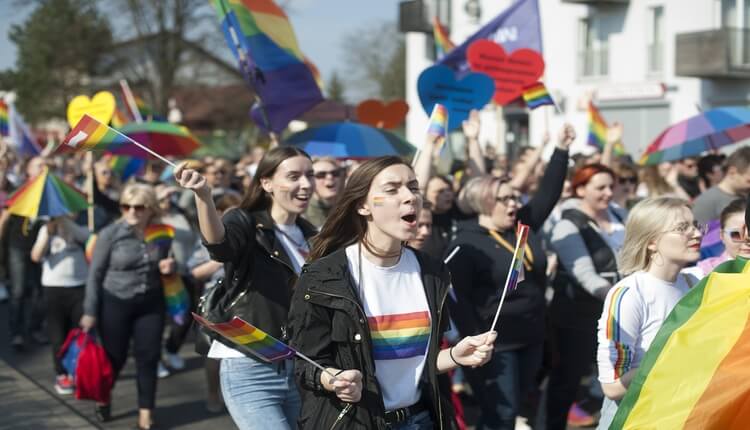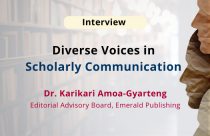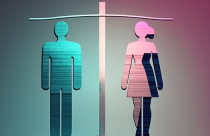Do LGBTQ Scientists Still Face Discrimination in Academia?

You can also listen to this article as an audio recording.
As near as a decade ago, LGBTQ scientists in STEM were still being singled out. People would ask them why they dress or act a certain way or, as in my case, if they have a wife. But now we celebrate the International LGBTSTEM Day every year on July 5th wherein we celebrate the achievements and highlight the challenges of LGBTQ+ people in STEM. In fact, we have completed 50 years of the LGBT Pride in STEM and are going strong. By 2019, I thought discrimination against queer scientists would not be an issue I would have to face. However, that did not turn out to be quite true. So, it is clear that there is still a lot of work to be done to fight LGBTQ discrimination in academia.
The Hurdles We Face
There are many hurdles that LGTBQ scientists face. These hurdles lead to what can be referred to as “leaking out of the pipeline”. This refers to those who do not complete an academic program. The data shows that for straight men entering STEM fields in universities, 26% end up leaving the program. However, for queer male scientists, that figure increases to 40%.
Jon Freeman, an associate professor of psychology and neural science at New York University, shares his experience with “Invisibility”. This is an issue I had to face for a long time. This refers to the fact that not only are LGBTQ individuals silent about their sexual orientation, but others claim to not know of a single LGBTQ scientist. Freeman says that when he took an assistant professor position, he made sure to hide his secret. However, rumors spread. Students would visit his office for a quick glimpse of a “real queer scientist”. Freeman, like me, felt like an outcast. He did not decide to come out as gay. Others did that for him. Like Freeman, I want to be the one to make the decision to come out.
The Connection to Gender Discrimination
Gender discrimination in the STEM fields goes back decades. The sciences were deemed not a place for women. This attitude is still present, despite significant gains made since the early 1990s. Today, more women are getting degrees and jobs in STEM fields than ever before. Their fight against gender discrimination can help the LGBTQ community see what needs to be done so they can have a better future.
However, despite gains there is still gender discrimination in STEM. In some fields, women make up only about 20% of students. As a result, women might have different academic and professional experiences than men. This could affect their work and opportunities to be published. Gender discrimination, like LGBTQ discrimination, impedes progress because the voices of many talented people are being ignored.
Statistics Related to LGBTQ Representation in STEM
There is a long history of LGBTQ representation in the sciences. However, according to the group Queer in Stem, more than 40% of queer scientists have not disclosed their sexual identity to colleagues. In his 2018 study, Bryce Hughes, an assistant professor of education at Montana State University, found that students who identify as LGBTQ were far less likely than straight students to make it to the fourth year of a STEM program.
Despite this, there are some bright spots for the LGBTQ community in STEM. Grace Williams grew up as a poor minority in southern U.S. She was the only student of color in her honors program in high school and one of three women in her honors engineering program in college. She heard other people comment about why she, due to her race and background, is even in the program.
When Grace entered graduate school, she faced a new discrimination based upon her LGBTQ identity. She was told by another student that LGBTQ students should not be educated alongside other students. Grace was shocked. She is bisexual and had only opened up to her friends. Fortunately, Grace did not let this stop her from continuing her education. She received help from a campus group called Prism that offers support to LGBTQ students. Since then, Grace works on creating tests for Alzheimer’s disease and worked with the nonprofit Alzheimer’s Association.
LGBTQ Academic Groups
The STEM Inclusion Study found that LGBTQ people do not receive the same amount of support as their straight peers. As a result, LGBTQ scientists surveyed said that they are more likely to leave their STEM careers. Fortunately, support for LGBTQ individuals in STEM is growing. There are many groups that have been founded by members of the STEM community that work to increase awareness and inclusion for queer scientists.
500 Queer Scientists is a campaign for LGBTQ people and their allies working in STEM fields. The group has 3 goals.
- Ensure the next STEM generation has LGBTQ role models.
- Help the current generation recognize they’re not alone
- Create opportunities for community connections and greater visibility within STEM.
Another group that has done tremendous work for the LGBTQ community is Pride in Stem, a charitable trust run by an independent group of LGBTQ scientists from around the world. Its main goal is to showcase and support all LGBTQ people in STEM fields. The group organizes LGBTSTEM DAY, a day of recognition for LGBTQ scientists in STEM.
Queer in STEM is a group that studies the sexualities and gender diversity in STEM. The group’s surveys have made a significant impact in the academic community, including inclusion in peer-reviewed journals and many academic seminars.
Looking to the Future
The studies done by Queer in STEM and others are invaluable in furthering the cause for LGBTQ scientists. The Queer in STEM symposium will put the issues that LGBTQ scientists face in front of a wide audience. It is events like this that will continue to help further the cause for LGBTQ scientists and strengthen the support they receive.
Out in STEM and the US National Organization of Gay and Lesbian Scientists and Technical Professionals continue to do important work to connect for LGBTQ scientists. This network provides significant support to those who have and those who still do face discrimination. Academic groups and conference organizers need to follow their example and be more proactive in furthering inclusion for the LGBTQ community. In addition, universities need to include the LGBTQ community in their diversity efforts.
What are your experiences with the LGBTQ community in STEM? Have you witnessed discrimination or seen students discriminated against? Please share your thoughts with us in the comments section below.









